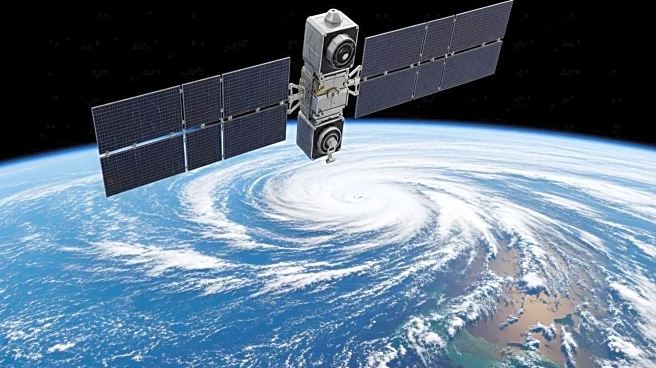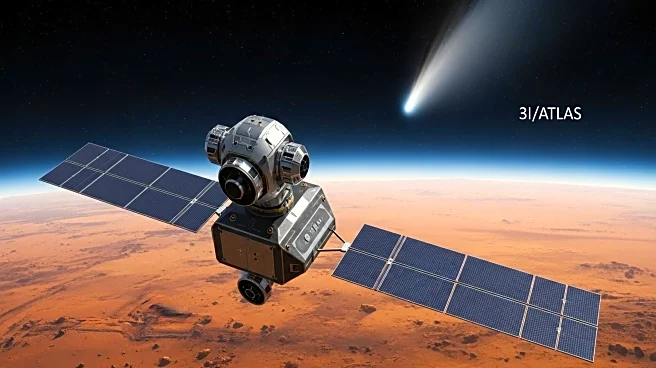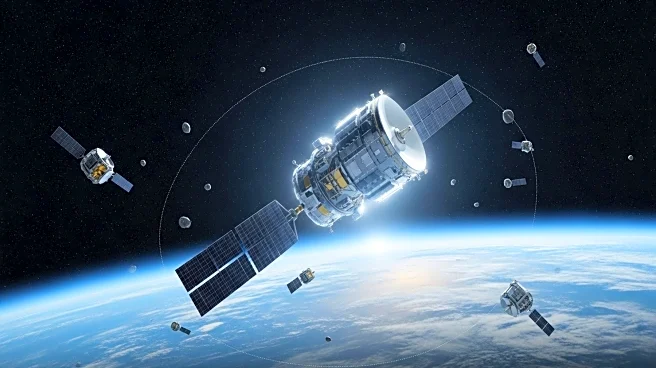What is the story about?
What's Happening?
The European Space Agency's Swarm satellite constellation has revealed an expansion of the South Atlantic Anomaly, a weak region in Earth's magnetic field, by an area nearly half the size of continental Europe since 2014. This anomaly poses risks to satellites due to increased radiation exposure. The Swarm mission, part of ESA's Earth Observation FutureEO program, provides detailed magnetic field measurements, offering insights into the anomaly's dynamics and contributing to understanding Earth's magnetism.
Why It's Important?
The expansion of the South Atlantic Anomaly is crucial for space safety, as it affects satellite operations and can lead to hardware malfunctions. Understanding the anomaly's behavior aids in developing strategies to mitigate radiation risks for satellites. The Swarm mission's data enhances scientific knowledge of Earth's magnetic field, influencing navigation systems and space weather monitoring. The findings may impact satellite design and operational protocols, benefiting aerospace industries and scientific research.
What's Next?
Continued monitoring of the South Atlantic Anomaly is expected, with further analysis of Swarm data to understand its causes and effects. Researchers may explore technological solutions to protect satellites from radiation exposure. The anomaly's expansion could prompt international collaborations to address space safety challenges. Future satellite missions may incorporate Swarm's findings to improve resilience against magnetic field anomalies.
Beyond the Headlines
The anomaly's expansion raises questions about Earth's magnetic field stability and its implications for global navigation systems. The findings may influence geopolitical considerations regarding satellite deployment and space exploration priorities. Long-term, the research could contribute to understanding Earth's core dynamics and its impact on planetary systems.
AI Generated Content
Do you find this article useful?













